Trifles look complicated but are actually quick to whip up. Once you learn the basic components, these beautiful showstoppers will be your go to for dinner parties and holidays.
A brief history
The trifle hails from England and was originally composed of three layers that consisted of sponge cake or Ladyfingers that were soaked in a spirit of choice (usually sherry), jam or jelly, custard, and whipped cream. The trifle was then garnished with candied or fresh fruit, nuts or grated chocolate.
The layers
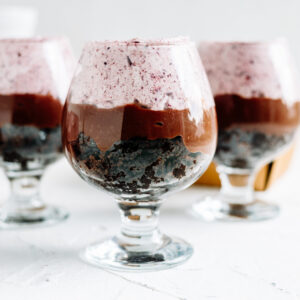
A trifle should have at least three distinct layers. Each layer should offer different textures and flavors.
- The first layer is your baked element. It can consist of cake, brownie, shortcake, or spongy cookie (like lady fingers).
- The second layer is the pudding or custard layer. The flavor of the pudding should pair well with the bottom layer and enhance the flavors or provide a good contrast flavor.
- The third layer is the whipped component. This layer is supposed to be light and fluffy. It can be flavored with extracts, or have a jam or jelly folded into it.
- Some trifles have a layer of fruit or jelly as the second layer or after the pudding layer.
Trifle size
Trifles can be made as individual treats, or as one large showstopper! Individual trifles are great on dessert table at a cocktail or dinner party. Large trifles composed in one dish are perfect for family gatherings and holiday celebrations.
Creating the first layer
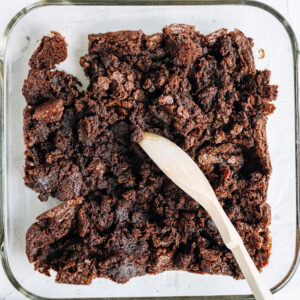
We will be using our delicious Chocolate and Marionberry Mousse Trifle recipe as an example throughout the description of the creation process.
The brownie layer is the first component. This decadent, chocolatey brownie is the perfect base. The brownie can be cut into cubes or crumbled in the bottom of the glass or dish. We suggest pushing down the brownie to create a nice even layer.
The first layer can also consist of cake, Ladyfingers (or another type of sponge cake), or a biscuit.
The second layer
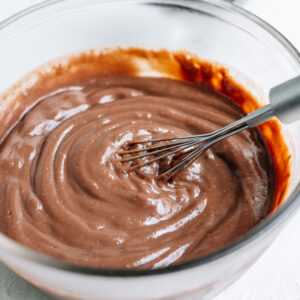
The second layer is chocolate pudding! This rich custard is the perfect second layer. After making your pudding spoon it into your trifle vessel and smooth it out to create a nice even layer. The amount of pudding you put in depends on the size of your container that you are building your dessert. You want each layer to be an even amount.
The second layer can be composed of any type of custard that compliments the other flavors in the trifle.
- Lemon
- Vanilla bean
- Coconut
- Caramel
The third layer
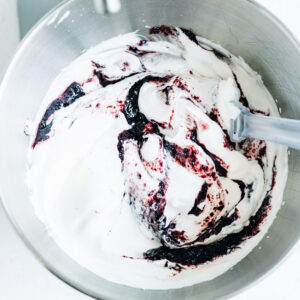
This layer is the whipped component. For the final layer we whipped our cream and folded in marionberry jam. This layer can be spooned or piped (using a piping bag) into your glass or container. To give the third layer a nice, polished look, we recommend taking a spatula and leveling off the whipped layer.
The whipped layer can be flavored however you like!
- Vanilla extract
- Almond extract
- Lemon
- Raspberry
- Orange
- Various flavors of jams and jellies
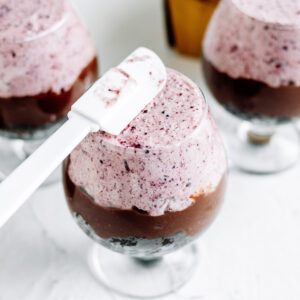
Garnish
Topping off your trifle with some garnish is the perfect finishing touch. Below are some ideas for how to complete your dessert.
- Pipe some whipped cream on top. Using a piping bag and star piping tip, pipe a rosette on top of each trifle, or several if it is in a larger container.
- If you used fruit in your trifle, arrange some of the fruit on top to create an attractive design
- Sprinkle chopped nuts, or chocolate curls on top
- For extra wow factor, whip up a meringue and torch the top
Want to make one of our recipes, but prefer to skip the ingredient shopping and measuring? Check out bakeeatlovebox.com – we ship pre-measured baking kits to your doorstep.
Sources
Sharon Tyler Herbst. (1995). Food Lover’s companion (2nd ed.). Barron’s educational series.

